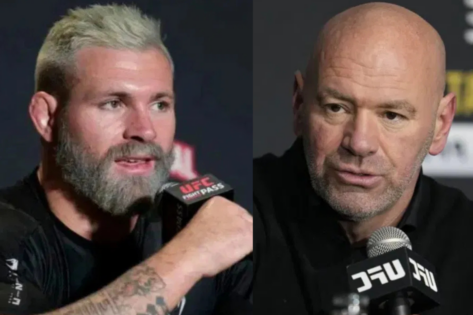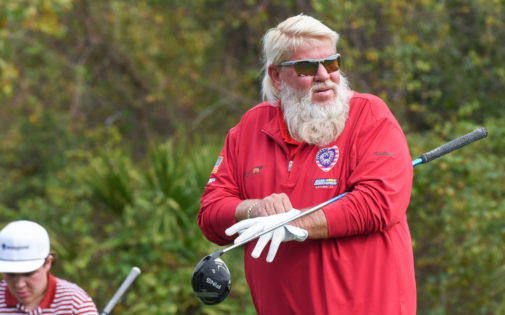Pulling into the parking lot outside NASCAR’s Watkins Glen International last Sunday, the mood felt different. Beneath the laughter and recollections was a quiet tension, an odd undercurrent of caution. This wasn’t the anticipation of a classic NASCAR brawl; it was something more muted, the sense that fans weren’t sure what they would get.
By the time the checkered flag fell, conversations in the stands turned hushed. The talk wasn’t angry or loud. It was pensive. We know Watkins Glen has always been a jewel in NASCAR’s crown, a road course with a blend of high-speed straights, challenging elevation changes, and technical sectors that reward skill and strategy in equal measure. But in 2025, the spark wasn’t there.
Stretches of stalled momentum, mechanical gremlins, and driving errors that seemed more about limitations of the current Cup package than driver misjudgment marred this year’s event.
First, early in the race, Kyle Larson’s flat, resigned “No brakes” over the radio became a fitting metaphor for the day. His early retirement from the race wasn’t an isolated misfortune; it sort of set the tone for a grid where drivers were too often battling their equipment rather than their rivals.
Next, Chase Elliott, the once undisputed king of the Glen, could only watch his hopes fizzle. Elliott’s struggles were part of a larger trend in 2025 where seasoned frontrunners are scrapping for points rather than hunting wins. Even, Tyler Reddick, despite his top-ten run, admitted, “We were still struggling, honestly….We faded pretty hard at the end there. It was good that it worked out.”
Ryan Blaney echoed similar frustrations, remarking, “I just lost speed, handling, and where the track was at, probably a little bit, and just lost in pace. But overall, really good effort by our whole group, and I wish we could have finished a few spots better than that.”
These were technical troubles, combined with race control decisions that baffled some fans and drivers alike, meant that the unpredictability of Watkins Glen no longer felt like artful chaos, but mechanical and procedural dysfunction.
And, it’s a well known fact how Watkins Glen acts as a traditional role and a litmus test for driver skill. But it instead felt like a spotlight on the weakest points of NASCAR’s current Cup product. Hence, the frustration.
NASCAR Fans Boil Over, and the conversation changes course
Jeff Gluck posted on X, comparing viewership of the Cup series, Xfinity, and Truck series that sparked the debate. If social media and trackside chatter were any indication, fans didn’t just notice they’re shifting their loyalties. The tone online was blunt: “We have about a million casual Cup fans, because by now any decent/diehard NASCAR fan is tuning into Xfinity, the best racing available right now.”
Now, if we look at the Xfinity cars, they have lower downforce and more drift, that allow drivers “slip and slide” around the track, making races feel more hands-on, unlike the Cup cars. Even Austin Hill once noted, “They are so much fun to drive… you can slip and slide around… might pay a penalty… but it lets you drive the car really hard.” And, Denny Hamlin also has emphasized that Xfinity cars let drivers influence the car ahead, saying “You watch the Xfinity race and it’s like they’re able to pass… manipulate the car in front… unlike Cup, where you just lose all downforce close to them.” So maybe the fans feel diehard NASCAR fandom is leading to Xfinity, we know why.
Over and over, the Xfinity Series was praised as the place where real excitement still lives. “Xfinity is what will grow this sport in its current state. I look forward to Saturday more than Sunday now,” one fan wrote, with dozens in agreement. The Tier 2 races generally feature more overtaking and lively battles, thanks to less restrictive aerodynamics and more variability in car performance.
Some NASCAR viewership numbers from Watkins Glen:
Cup — 1.85 million (USA)
Xfinity — 1.096 million (CW)
Trucks — 253k (FS1)
Also, IndyCar got 708k from Portland on Fox.
— Jeff Gluck (@jeff_gluck) August 12, 2025
Another chimed in, “If you had better payouts in Xfinity, more drivers would opt to run that series and car. Sorry, it’s just true.” Others went straight for the jugular: “Under 2 million… when will NASCAR finally realize their Cup car sucks?” and, “Xfinity is the best racing hands down. Eventually, it will become the most watched every week.”
Now payouts in Tier 1,2,3 NASCAR has always been up for debates. If you look at the 2025 Daytona 500 Weekend Purses
Cup Series: ~$30.3 million: Xfinity Series: ~$3.76 million (≈ 12% of Cup purse): Truck Series: ~$1.26 million (≈ 4% of Cup purse), and that’s a huge gap there. And, it’s the same for Coca Cola 600, as well as Atlanta. In all, the Xfinity purses range from 10–15% of Cup Series payouts, and the Truck Series purses are even lower—around 7–8% of Cup Series payouts.
So the overall narrative wasn’t about a single bad race; it was about an ongoing shift in perception. “The fact that Xfinity is catching Cup says A LOT,” read one comment that gained traction. Now, while some would call it a passing frustration; it looks more like a sentiment that NASCAR fans are carrying.
At Watkins Glen, the sentiment was live and the change felt more.
The post Concerned Fans Zero In on NASCAR’s One Key Problem After Watkins Glen Mess appeared first on EssentiallySports.



